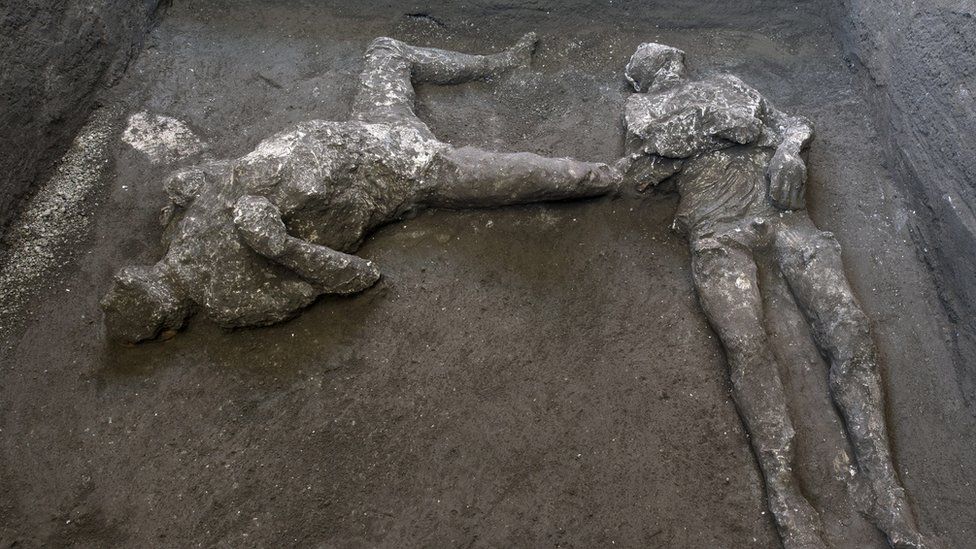The remains were found in Civita Giuliana, a town 700m Northwest of the center of Pompeii. The two men found had stark resemblances. One of them seemed to be middle-aged and well-dressed in fur coats, while the other was young, aged 18 to 23, and had a few broken bones in his back, which indicated that he was a laborer and often carried heavy objects. The richer man had traces of his coat under his neck while the younger one was dressed in a simple tunic.
Both of them seem to be running to escape the volcanic lava as they have clenched teeth and fists, indicating thermal shock. The two men’s teeth and a couple of bones were stored, and the voids left by their soft tissues were filled with plaster that was left to freeze and then unearthed to show the outline of their bodies.
Director Massimo Osanna said that they “were perhaps seeking refuge” from the eruption “when they were swept away.” He also added to the reporters that, “It is a death by thermal shock, as also demonstrated by their clenched feet and hands.”
According to archeologists, the site of Pompeii is a rich source of information and an incredible spot for research and further study. More planned excavations need to be focused upon in the future.
DW quotes that, “Pompeii, 23 kilometers (14 miles) southeast of Naples, was home to about 13,000 people when the Mount Vesuvius eruption buried it under ash, pumice pebbles and dust, preserving many of the city’s ruins and remains.”
Also, Read: Under the fossils, a time machine exists


